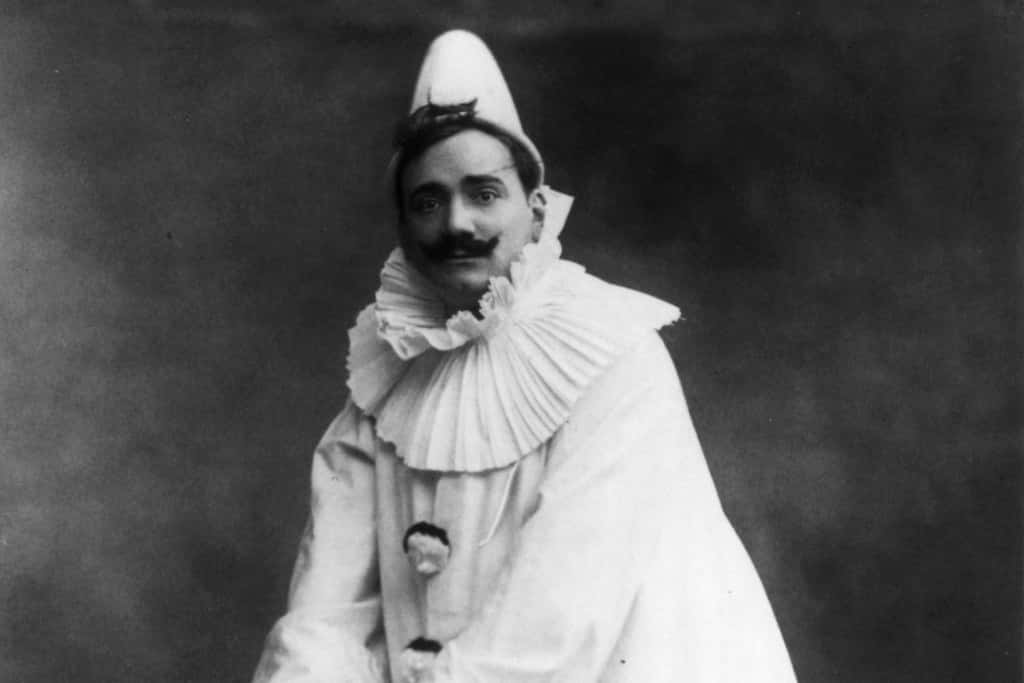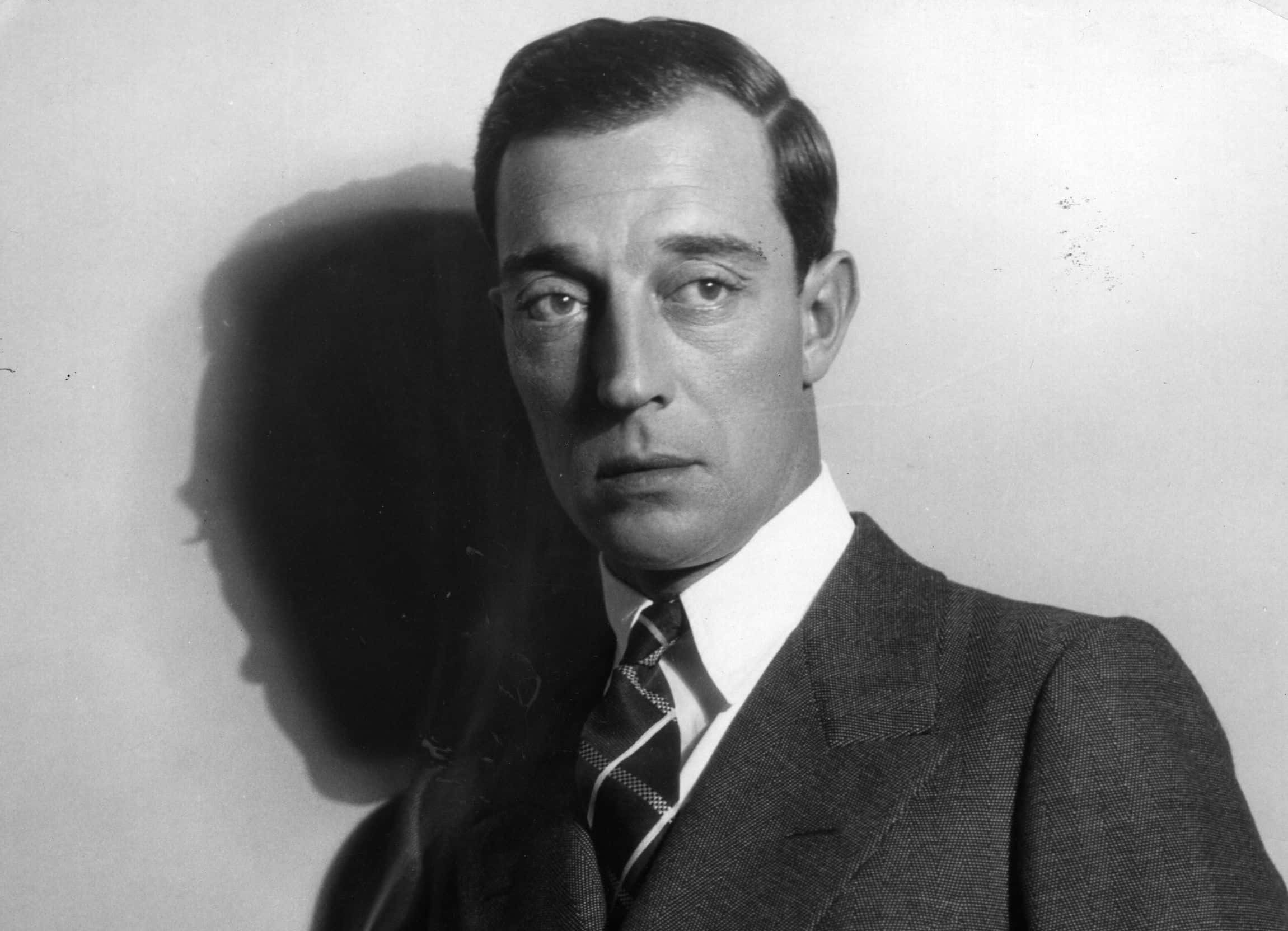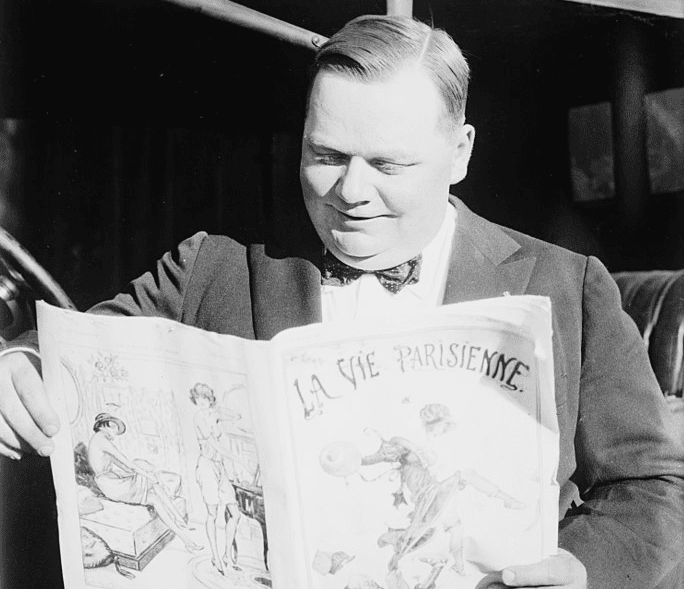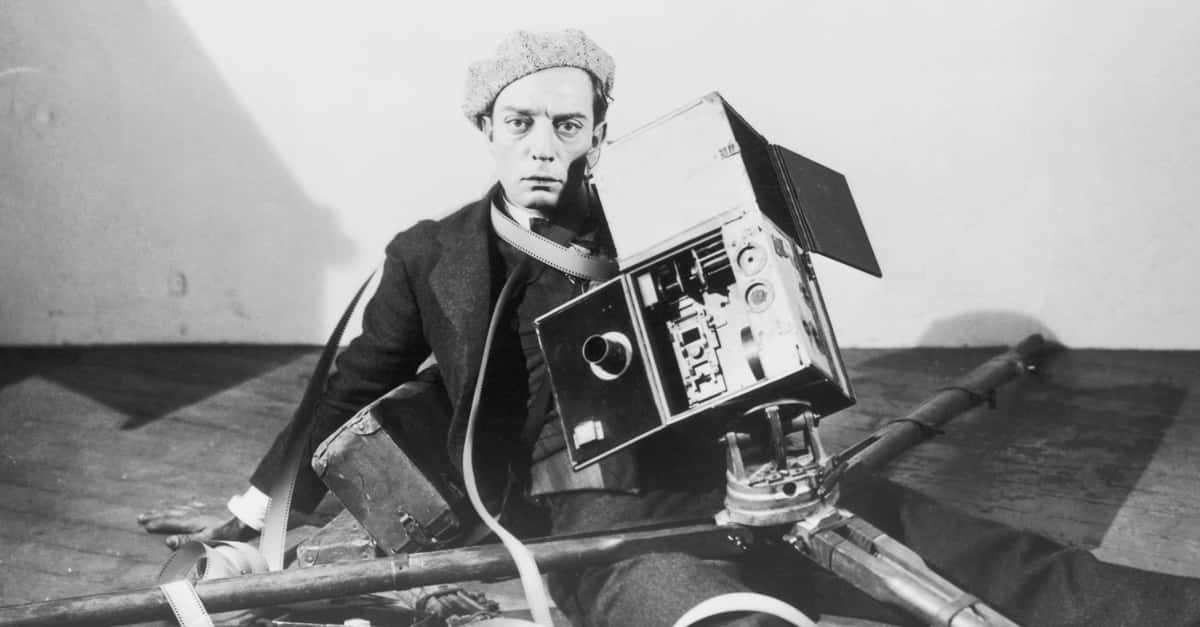In more ways than one, Roscoe "Fatty" Arbuckle was the biggest star in America. He was heavy-set but extremely agile—the prototype for a legion of comedic big men—audiences marveled at his physicality. The first actor to receive a million-dollar paycheck, Arbuckle was more popular even than Charlie Chaplin. Then it all went away. Arbuckle spent the final years of his career hiding from the spotlight, tainted by shame and scandal. His tumultuous story makes Fatty Arbuckle one of the most tragic figures in Hollywood history. Here are 42 heavy facts about Roscoe "Fatty" Arbuckle.
1. Big Baby
Roscoe Conkling Arbuckle was born in Smith Center, Kansas, in 1887, though his family moved to California when he was just a year old. Arbuckle’s defining trait was evident from the moment of his birth: when he was born, he weighed 16 pounds!
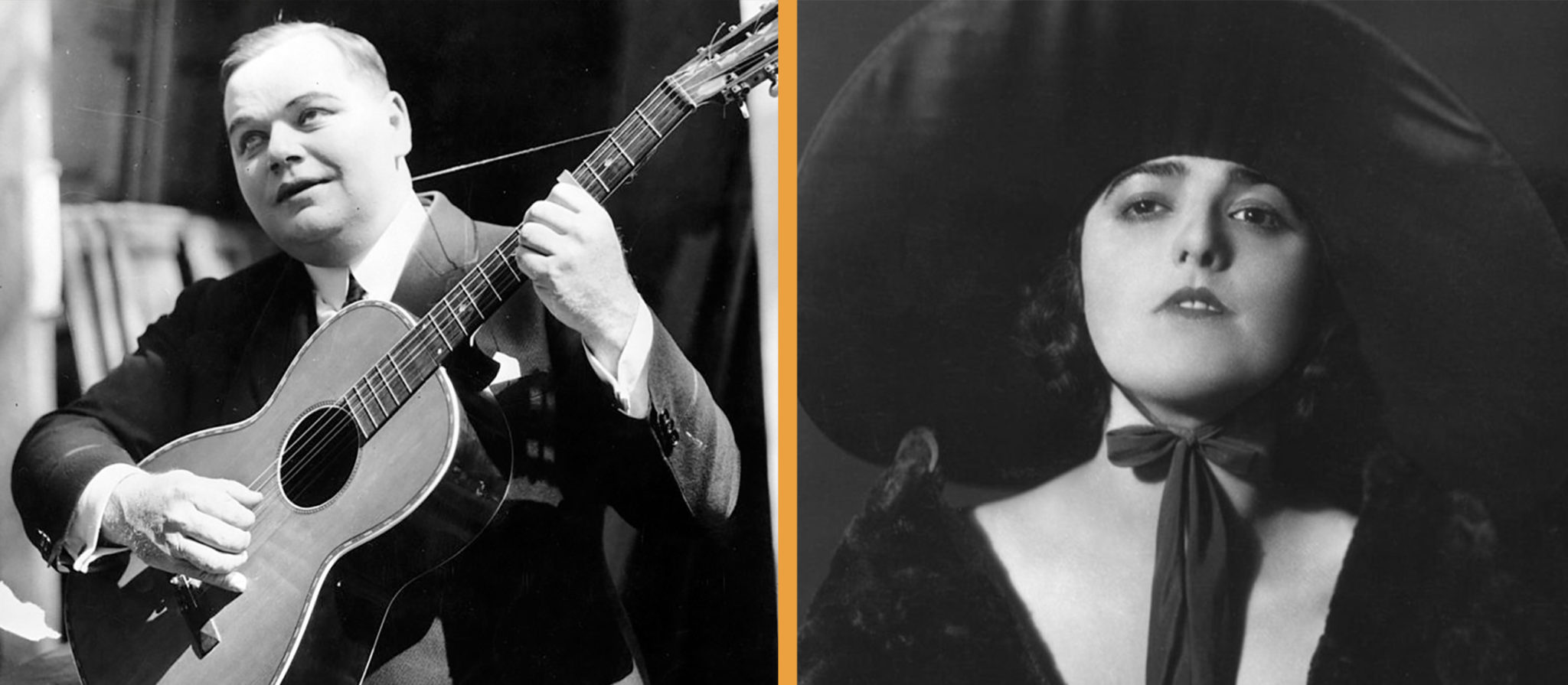
2. The Curse of Fatty Arbuckle
Screenwriters been trying to make a movie about the life of Fatty Arbuckle for years, but fate has always stood in the way. Notably, hefty actors John Belushi, John Candy, and Chris Farley have all passed on suddenly after being considered for the role.
3. Delayed Reaction
As one might expect, the birth took a tremendous physical toll on Mollie Arbuckle. It’s been speculated that the birth resulted in complications that led to her passing 12 years later.
4. Stage Dive
With no mother and a father who despised him, Arbuckle struck out at just 12 years old to try and make it on his own. He worked at a hotel briefly but decided to give showbiz a try. Arbuckle first appeared on stage at an amateur talent contest in 1899. When his singing and dancing failed to impress the crowd, Arbuckle panicked.
Attempting to flee the stage, he tripped, executing a perfect backflip and landing in the orchestra pit. The audience roared with applause. In an instant, Arbuckle had gone from getting booed offstage to winning the contest.
5. Song and Dance Man
Despite his bad luck at the talent show, Arbuckle was, by all accounts, an excellent singer and dancer. Silent film star Louise Brooks once shared a dance with Arbuckle, likening the experience to "floating in the arms of a huge donut—really delightful". Meanwhile, legendary tenor Enrico Caruso urged Arbuckle to abandon acting for singing full time.
With a little training, he said, Arbuckle could become the second-best opera singer in the world—after himself, of course.
6. On the Road
Arbuckle’s talent show victory led to a career in the then-popular vaudeville circuit. Joining a troupe led by Australian comedian Leon Errol, Arbuckle toured throughout the western United States. By 1909, Arbuckle had even performed in China and Japan.
7. Onscreen Romance
In 1908, Fatty Arbuckle married Minta Durfee. Durfee was an actress and chorus girl—most notably, she was the leading lady in Charlie Chaplin’s first movie, Making a Living.
8. Salute Your Shorts
Fatty Arbuckle began his film career the Selig Polyscope Company. He made his first movie, a short comedy called Ben’s Kid, in 1909. He would appear in several more Selig shorts before signing with Universal Studios in 1913.
9. In Good Company
While at Universal, Arbuckle worked under comedy pioneer Mack Sennett. As part of Sennett’s legendary "Keystone Cops," Arbuckle was a frequent co-star of another silent comedy great, Charlie Chaplin.

History's most fascinating stories and darkest secrets, delivered to your inbox daily.
10. Family Business
One of Arbuckle’s frequent co-stars during this period was Al St. John. St. John just happened to be Arbuckle’s nephew.
11. How Could He Say No?
Despite sharing the screen with comedy gods like Charlie Chaplin and Mabel Normand, Fatty Arbuckle stood out for his agility and wit. Paramount took notice and made Arbuckle an offer he couldn’t refuse: $1,000 a day, 25% of film profits, plus total creative control. Arbuckle wisely jumped ship.
12. Miss Behaving
At Paramount, Fatty Arbuckle made a string of short films with titles like "Fatty’s Tintype Tangle" and "Fatty’s Plucky Pup". Arbuckle would sometimes appear in drag, playing a character called "Miss Fatty".
 Fatty
Fatty
13. Just Desserts
Arbuckle’s 1913 film A Noise from the Deep marks an important comedy milestone: the first time the pie-in-the-face gag was shown onscreen. The pie was thrown by Mabel Normand, the target, of course, was Arbuckle himself.
14. Listen, Buster
In 1917, vaudeville performer Lou Anger introduced Fatty Arbuckle to a friend of his, a young stage comedian named Buster Keaton. Arbuckle and Keaton hit it off, with Arbuckle offering Keaton a small part in his next film. That small part led to a fruitful partnership that lasted until Arbuckle’s death. Arbuckle and Keaton appeared in 14 movies together.
Keaton often served as Arbuckle’s assistant director.
 Flickr, Breve Storia del Cinema
Flickr, Breve Storia del Cinema
15. A Big Production
When Arbuckle signed with Paramount in 1918, he turned control of his production company over to Keaton. Through the renamed Buster Keaton Productions, Keaton made some of the finest comedy films of his era.
16. Bonus Points
In 1920, Arbuckle signed a million-dollar contract with Paramount Pictures; he was the first actor to earn $1 million a year. One of the clauses of Arbuckle’s contract was basically cruel: it held that he must remain over 250 pounds. He would even receive a bonus if he added 50 or 100 pounds. Arbuckle dutifully obliged, and spent the rest of his life hovering around 300 pounds.
17. Fat Pride
That’s not to say Arbuckle was always comfortable with his weight. He made a point of not using his weight as a joke: he wouldn’t, for example, get stuck in a chair. He hated to be called Fatty, the nickname he had carried around since childhood. On set, whenever crew or cast members referred to him as Fatty, he would shoot back, "I got a name, you know".
18. Reboots
Arbuckle’s second movie for Paramount, Brewster’s Millions, has been remade six times. The most recent version was released in 1985 and starred Richard Pryor and John Candy.
19. Party’s Over
Arbuckle was on top of the world in 1921, and so he was entitled to take a little vacation. On September 5, Labor Day, he and some friends rented a string of rooms at the St. Francis Hotel in San Francisco and threw a little party. The party proved to be the biggest mistake of Arbuckle’s career.
20. Turn for the Worse
After a nap, Arbuckle woke to discover his party had been crashed by several uninvited guests. Among them was Virginia Rappe, an actress with a reputation for overdoing it at parties. Rappe appeared to be in great distress, clutching her stomach and tearing at her clothes. She lay in bed at the St. Francis Hotel for two days before being taken to hospital.
21. Accused
While Rappe was in hospital, her friend, Maude Delmont, told doctors Rappe had been assaulted by Arbuckle. While doctors found no signs of an assault and Delmont had a reputation as an extortionist, the authorities took the report seriously and speculated that Rappe’s organs must have been crushed under Arbuckle’s weight.
22. In the Jailhouse Now
Rappe died from a ruptured bladder on September 9, 1921. Fatty Arbuckle, charged with manslaughter, turned himself in to the authorities. He was placed in block #12 of San Francisco’s Hall of Justice to await trial.
23. Sunk
Reports of Virginia Rappe’s demise devolved into lurid stories and speculation, which made headlines around the country. William Randolph Hearst’s papers especially promoted the story. Hearst later said the Arbuckle scandal had been the biggest-selling news story since the sinking of the Lusitania.
24. Revenge is a Dish Best Served Cold
Most of Arbuckle’s closest friends—including Chaplin and Buster Keaton—were barred from speaking to the press, and could only watch helplessly as the court of public opinion reached its judgment. One actor who did speak freely to the papers was William S. Hart, who publicly declared his certainty of Arbuckle’s guilt; Hart, it’s worth mentioning, had never worked with or even met Arbuckle.
Later, Arbuckle wrote a film about a thief, resembling Hart, who beats his wife. The film was released as The Frozen North, starring Buster Keaton.
 The Frozen North,First National Pictures
The Frozen North,First National Pictures
25. Here Comes the Bribe
Matters were not helped when Paramount producer Adolph Zukor called up San Francisco district attorney Matthew Brady, looking to cut a deal. Zukor could lose millions if Arbuckle got locked up, and was willing to pay almost that much to keep him out. The selectively principled Brady was outraged and charged Zukor with attempted bribery.
26. Fatty on Trial
The first trial was set up for November of 1921. Public opinion toward Arbuckle was so negative that when his estranged-but-supportive wife arrived at the courthouse, someone in the crowd tried to shoot her.
27. The Defense Rests
The prosecution’s case was less than solid. Fatty Arbuckle was, by every account, a kind-hearted and gentle person. Multiple guests at the party also testified that he had never been alone with Rappe. Doctors found no evidence of assault and testified that Rappe had been struggling with bladder problems for some time.
Delmont had even sent a telegram to a friend in Los Angeles stating "We have Roscoe in a hole here, chance to make some money out of him".
28. Nice Guys Finish Last
The defense took a major hit when a doctor’s testimony that Rappe told him Arbuckle had not assaulted her was dismissed as hearsay. Arbuckle did himself no favors, either: while Virginia Rappe had a reputation as a hard-drinking party girl, Arbuckle urged his lawyers not to drag the young woman’s name through the mud.
Despite the vast evidence on Fatty Arbuckle’s side, the jury failed to agree on a verdict, and a retrial was ordered for January 1922.
29. Conflict of Interest
The jury was split 10-2 in favor of acquitting Arbuckle. The dissent was led by Helen Hubbard, who swore she would always vote to convict and refused to read transcripts or look at exhibits. A shocking secret was later revealed: Hubbard’s husband was a lawyer who had frequent dealings with the prosecution.
30. Trials and Tribulations
A second trial was ordered for 1922, but once again the jury was unable to reach a unanimous decision. Whatever relief a second hung jury might have brought Arbuckle was tempered by some heartbreaking news. Arbuckle’s friend, Paramount director William Desmond Taylor, had been slain the night before.
31. Third Time’s a Charm
The defense pulled no punches for the third trial in March 1922. Not only was Rappe’s party-girl reputation brought up, but Buster Keaton was brought to the stand as a character witness. Then Zey Prevon, the prosecution’s main witness, recanted his testimony, saying he was pressured to lie by San Francisco DA Matthew Brady.
It took the jury just six minutes to acquit the movie star. After the verdict was delivered, the chairman of the jury read a formal apology to Arbuckle, declaring "Acquittal is not enough for Mr. Arbuckle". Arbuckle had the apology framed and hung in his home.
32. Breaking the Bank
By the time the smoke had cleared, Arbuckle owed the equivalent of $10.5 million in court fees, plus a $500 fine for violating prohibition laws. Arbuckle was forced to sell his house and his cars to cover the costs.
33. Breaking Up is Hard to do
Arbuckle’s marriage had been on the rocks for years at this point, and though he and Durfee remained on good terms, the stress of the trial and the collapse of Arbuckle’s career exacerbated matters. Arbuckle and Durfee divorced in 1924.
34. The Marrying Type
Arbuckle married twice more. In 1925, he married actress Doris Deane, but their union was doomed to a heartbreaking end. This marriage, like his first, ended in divorce. Arbuckle married actress Addie MacPhail in 1932; they would remain married until he passed on.
35. Outcasted
Though Arbuckle had been officially declared innocent, the Motion Picture Producers and Distributors of America dealt him a heartbreaking blow. They barred Arbuckle from ever working in movies again. The ban was eventually lifted, but theater owners and movie producers alike were reluctant to show any new Arbuckle movies for fear of accusations of immorality.
36. Missing in Action
The antipathy toward Arbuckle’s movies meant that theaters no longer tried to keep them in stock. While the films of Charlie Chaplin, Buster Keaton, and other comedians of the era are in ready supply, most of Arbuckle’s films were never preserved and are considered lost to history.
37. A Friend in Need
Buster Keaton, at least, never forgot all that Arbuckle had done for him and his career. After the trial, Keaton signed over 35% of the profits from his production company to make sure his old mentor had a steady income.
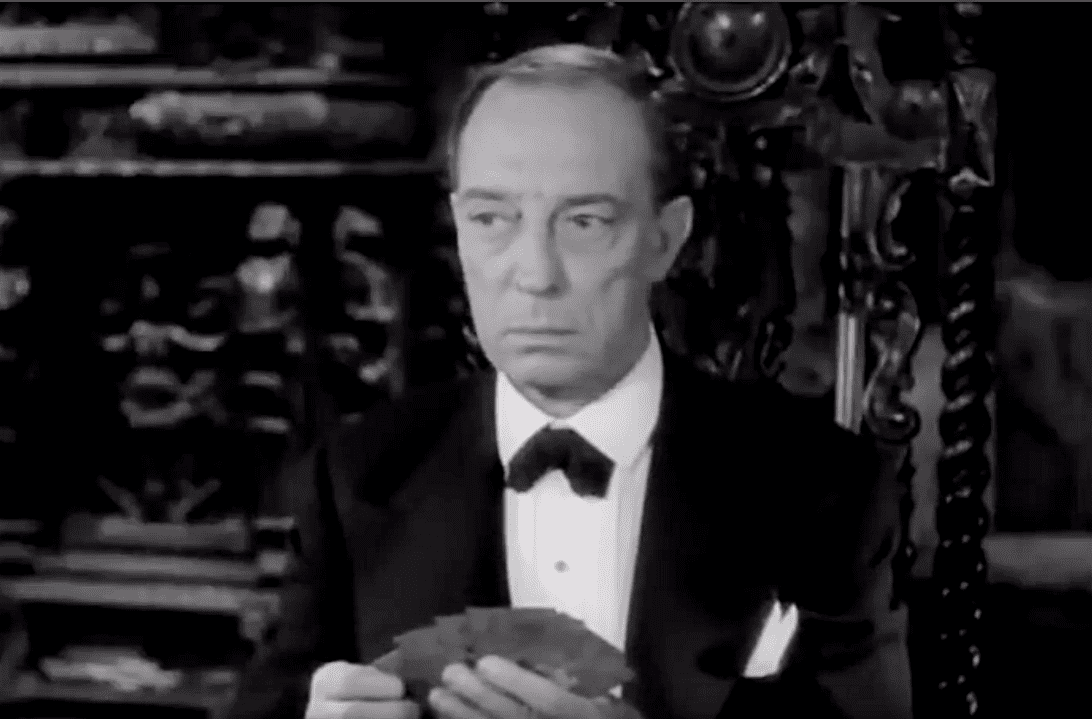 Sunset Blvd. (1950), Paramount Pictures
Sunset Blvd. (1950), Paramount Pictures
38. What’s in a Name?
Fatty Arbuckle couldn’t land a credited role for years after the Virginia Rappe trials, but he did occasionally find work as a director, as long as he worked under a pseudonym. When directing, Arbuckle used a particularly symbolic name: William B. Goodrich—Will B Good—a pledge, he said, to the movie-going public.
39. There Are No Small Parts
Every so often, Arbuckle would turn up in a brief, barely-recognizable role, for which he was never credited: a woman in Go West, a man behind a newspaper in Listen Lena. One notable example was Hollywood, released more than a year after his trial: Arbuckle has a brief cameo and is identified, on-screen, as a nameless, out-of-work actor.
40. Re-Vita-lized
It took ten years for Fatty Arbuckle to finally get back on screen. Beginning in 1932, he appeared in a series of shorts for Vitagraph Studios in Brooklyn. Vitagraph was only a small studio, but it happened to be a subsidiary of Warner Brothers; the relative success of the shorts caught the WB’s attention and gave Arbuckle some hope that maybe, just maybe, he could make a comeback.
41. The Best Day
Roscoe "Fatty" Arbuckle passed on in his sleep on June 23, 1933, following a heart attack. Earlier that day, he had signed a contract with Warner Brothers to make a full-length feature film, and then went out that evening to celebrate he and Addie’s one-year anniversary. Arbuckle told friends that evening, "This is the best day of my life".
42. He Takes After His Senator
Forget that nickname—how did Fatty Arbuckle end up with the name "Roscoe Conkling"? Well, William Arbuckle, Fatty’s father, was suspicious after the birth, as both he and Fatty’s mother, Mollie, were exceedingly thin. William Arbuckle was so certain of his wife’s infidelity that he named his son Roscoe Conkling, after a US senator notorious for his extramarital affairs.





